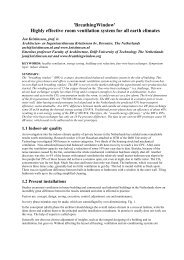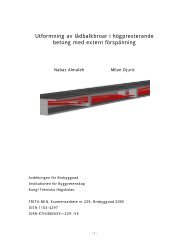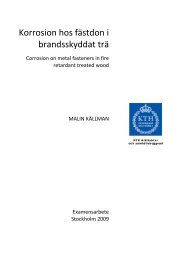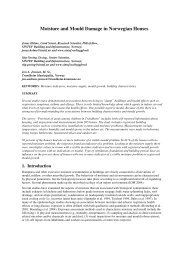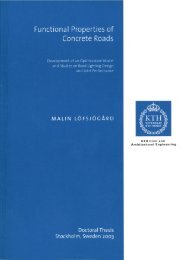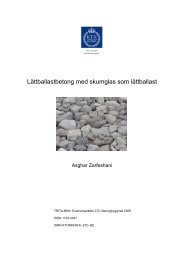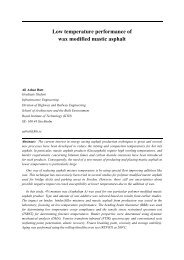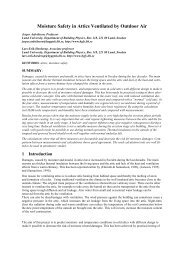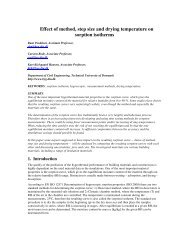Read complete article here
Read complete article here
Read complete article here
You also want an ePaper? Increase the reach of your titles
YUMPU automatically turns print PDFs into web optimized ePapers that Google loves.
2. Composition of External Thermal Insulation Composite Systems<br />
ETICS in North America usually closely resemble those in Europe. The standard composition of an ETICS is<br />
shown in Fig. 1. The ETICS is usually fastened to the exterior sheathing of a wood stud wall or on a masonry<br />
wall. In most ETICS expanded Polystyrene (EPS) is used as insulation material. The use of high-density mineral<br />
fiber insulation which is also quite common in Europe is practically unknown in North America. On top of the<br />
insulation slabs a polymer modified base coat including a reinforcing glass fiber mesh are applied, followed by a<br />
finish coat. The reinforced base coat together with the finish or top coat is usually 5 to 10 mm thick.<br />
Sheathing<br />
Adhesive<br />
Rigid Insulation Board<br />
Base Coat with<br />
Reinforcing Mesh<br />
Finish Coat<br />
Fig. 1: Composition of a typical External Thermal Insulation Composite System<br />
3. Track record of ETICS<br />
In the middle of the 90s the first substantial damage cases associated with ETICS were reported from North<br />
Carolina. Similar reports from other regions with high precipitation intensities (e.g. Seattle, Vancouver)<br />
followed. The moisture problems occurred mostly at the exterior sheathing boards that served as substrate for the<br />
ETICS. Pictures of rotten OSB or disintegrated gypsum board quickly spread among the building community<br />
and forced manufactures to react [Nisson & Best 1999]. A comprehensive literature review analysing more than<br />
10 investigations carried out on several objects each, comes to the following conclusions [Cheple & Huelman<br />
2000]. The main reasons for moisture damage are leaks around windows and joints w<strong>here</strong> rainwater penetrates<br />
beneath the insulation layer. However, problems due to air convection or diffusion of indoor air may also have<br />
caused elevated moisture in some cases. An aggravating factor is the low drying potential of the construction.<br />
Moisture can neither dry-out quickly to the exterior because of the vapour retarding foam insulation nor to the<br />
interior due to the usual presence of a polyethylene vapour barrier. The solutions proposed in [Cheple &<br />
Huelman 2000] are limited to managing rain water penetration by proper sloping and flashing of joints and wall<br />
openings and by applying drainable insulation systems. Sheathing materials that are sensitive to moisture such as<br />
untreated gypsum board are considered inappropriate as ETICS substrates. Other work has shown that enhancing<br />
the drying potential towards the interior spaces by an innovative vapour control strategy may also alleviate the<br />
problem [Karagiozis & Kumaran 1997].<br />
The moisture problems that occurred in North American in the 90s were not limited to walls having ETICS.<br />
Buildings with normal stucco façades (render applied on building paper over OSB or plywood) were also<br />
affected [Lawton 1999]. This resulted in a new design approach that aimed at better detailing to reduce rainwater<br />
penetration and at increasing the drying potential of the whole assembly. It has been realized that it is difficult to<br />
set-up a perfect building that will never leak. T<strong>here</strong>fore the building envelope should be designed in such a way<br />
that small leaks can be handled. Consequently the ASHARE Standard 160 on criteria for moisture design<br />
[BSR/ASHRAE 2006] states that in the absence of performance proofs it should be assumed that 1% of the wind<br />
driven rain hitting the façade is deposited on the weather resistive barrier (WRB) behind the cladding. If t<strong>here</strong> is



